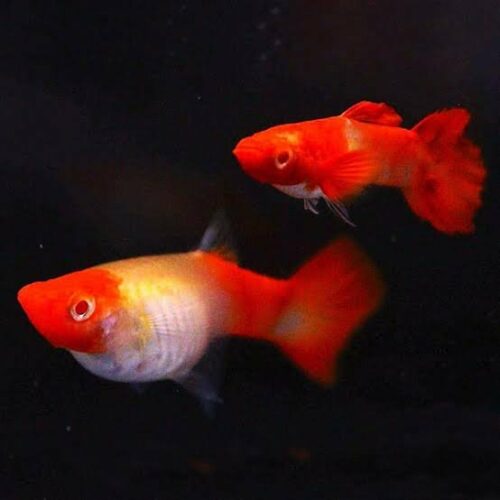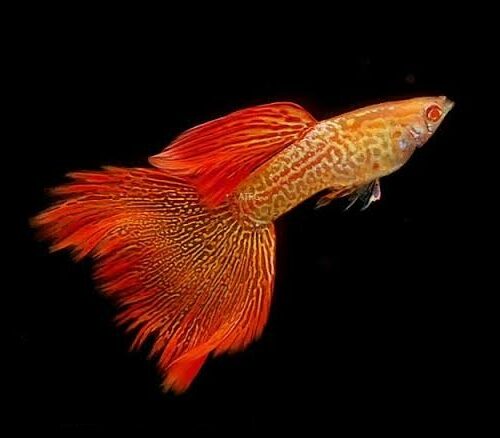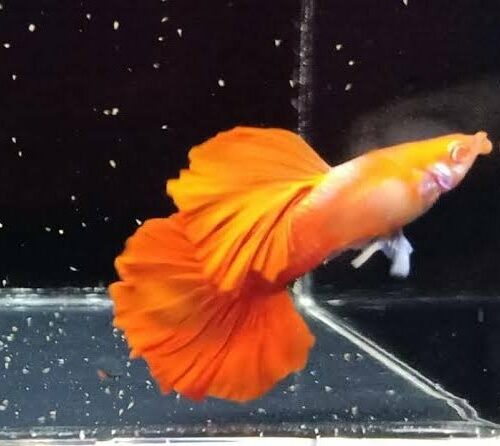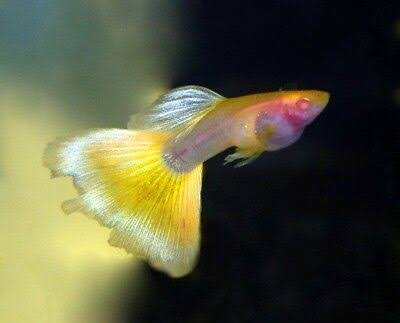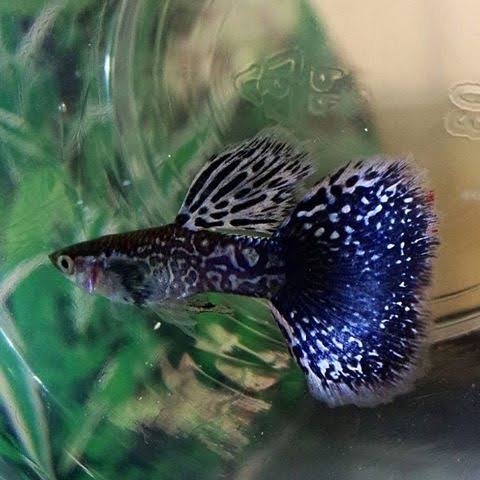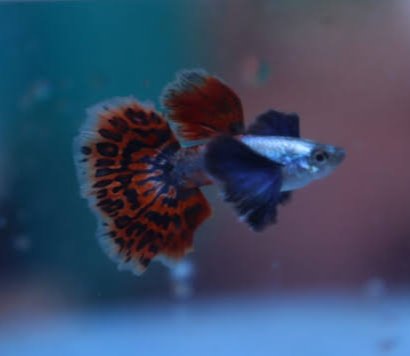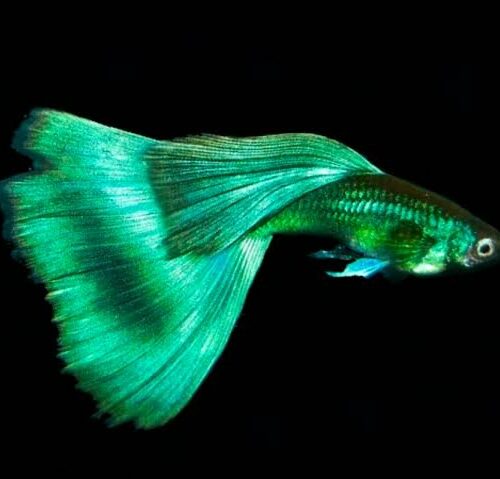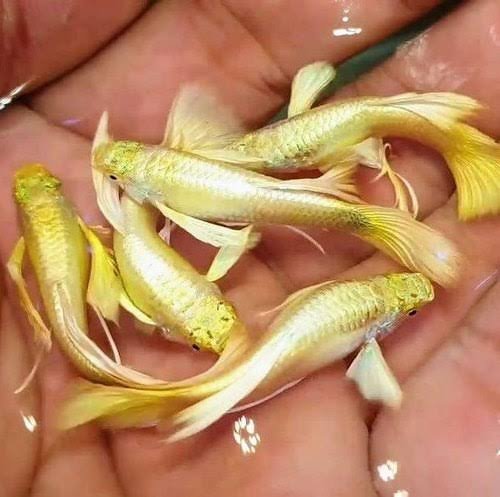Guppies
For many years, guppies have been an essential component of the pastime of keeping aquariums. These fish were originally found in tropical pools in South America and the Caribbean Islands; but, due to selective breeding practises at fish farms, they are now accessible in a wide range of hues, which were not previously available. Many people who maintain guppy fish begin their hobby with with one or two fish, but since guppys are live-bearers and have long-term sperm storage, it’s possible that their tank may quickly become overcrowded.
The Beginnings and the Spreading
Although they have been grown in captivity for more than a century, guppy fish were first discovered in South America. They were discovered by Robert John Lechmere Guppy in 1866 on the island of Trinidad, and he is honoured with the naming of this fish. Freshwater streams in the northern regions of South America, such as Surinam, Guyana, and Venezuela, as well as freshwater streams in the Caribbean islands, such as Barbados and Trinidad and Tobago, are their natural habitats. They may now be found in many warm waters across the globe and have been introduced to every continent other than Antarctica.
Different colors and markings
Guppies come in an almost infinite number of colour variants. Males are distinguished from females by their brighter coloration as well as their longer caudal and dorsal fins. Some varieties of guppies have short, rounded tails, while others have “V”-shaped tails, and still others might have an extended tail that is about half the length of its body. There is a possibility that the fish’s tail fins could have a marbled or striped look, or that the fish will be entirely one or two colours. There is undoubtedly a guppy that is the ideal match for whatever colour combination you can imagine dreaming up.
There are several websites that sell pets, and some pet retailers also sell “exclusive” or “unique” breeds that cannot be found anywhere else. These strains are often the product of extensive inbreeding, which results in the generation of fish with impaired immunological functions and shortened life spans. You should make every effort to adhere to the popular kinds that have well-established lineages. If you wind up mating two distinct strains, you could be startled by the colour changes that result from the hybridization.Tankmates
Guppies are friendly, laid-back communal fish that get along well with a variety of other fish species that aren’t very aggressive. It is recommended that you house them alongside other live-bearing fish of a similar kind, such as platys or mollies. Other species of fish that may thrive in the same environment include neon tetras and zebra fish. It is important to keep in mind that any fry generated from an active guppy female might potentially become supper for other fish in the tank; thus, having smaller tankmates will guarantee that more fry survive.
The choice to maintain solely guppies in an aquarium is one that is made by a lot of people. You are free to keep many guppy species together in the same aquarium if you so like.
Care for Guppy Environments and Animals
Guppies are a fantastic fish for those just starting out. They need little upkeep, and you may get away with making some rookie errors with them. Given that guppies are highly active fish, it is advised that the tank be of a larger size. They do well in an aquarium that also has plants and cuddly decorations.It is very advised that you maintain males and females in separate tanks so that your population does not rapidly increase. This will prevent your population from exploding. That will assist in avoiding an increase of the population. Because guppy females may store sperm for many spawns even after being separated from men, it is possible for a female to produce several batches of pups after she has been with a guy. Tank dividers are OK as a stopgap measure, however the majority of these weak, plastic dividers are often insufficient to successfully separate the fish in the tank. The use of two distinct tanks will ensure that no undesired spawning occurs.
Guppy Diet and Feeding
Guppies are omnivores and may thrive on a wide range of diets that are readily available for purchase. Although guppies are quite tiny in size, pelleted meals, also known as micropellets, are the superior option since they maintain their nutritional value for a longer period of time than flakes. You are free to include supplements in your diet, such as frozen fish meals, but you should limit yourself to doing so no more than once or twice per week. The majority of fish that are kept as pets do best on a diet consisting entirely of pellets.You may have to feed your fish once or twice a day, but it all depends on the temperature of your aquarium and the other animals that live in the tank. Always begin with a little amount of food, and after that has been eaten, add a little more until there is none left. Repeat the process for a few minutes, at which time you should examine all of your fish. At feeding time, you should carefully observe all of your fish to determine whether or not any of them seem to be unwell or behaving strangely.
Gender Differences
To ensure that your male and female populations are kept distinct from one another, you will need to recognise a few key gender characteristics. Males are often smaller and more vividly coloured than females. The colour of females is typically brown, and they are bigger and rounder than males.
The anal fin of the male is long and slender, and it culminates in a point. It is located on the underside of the fish. The female guppy has a bigger, more triangular or fan-shaped anal fin than its male counterpart. As the male guppies continue to mature, their bodies will take on a colour that does not appear on the bodies of the females. Guppies reach sexual maturity in around two to three months, and you should be able to distinguish between male and female guppies by the time they are one month old, if you decide to separate them at that time. Female guppies begin to generate their first offspring between the ages of 10 and 20 weeks, and they will continue to reproduce between the ages of 20 and 34 months.
The process of Guppy breeding
A lot of people who are just starting out in the pastime will get one female guppy and all of a sudden have a swarm. Due to the fact that female guppies are able to store sperm, it only takes one insemination by a male to result in the birth of many spawns. It is usually advisable to keep male and female guppies in separate tanks so that your aquarium does not reach its maximum capacity for housing fish and other inhabitants.
Since guppies are live-bearers, each spawning will result in the birth of anywhere from 10 to 50 wriggling fry for the mother. If you wish to preserve any fish from being eaten by the other fish in the aquarium, you should keep the newly born fry in a breeding box or separate tank from the rest of the fish in the aquarium. The babies will have places to hide and will have a better chance of surviving in aquariums that have a lot of plants.
-
Guppies
AFR Flower Dorsal Guppy(1 pair…
Original price was: ₹800.00.₹400.00Current price is: ₹400.00. Add to cartAlbino Full Red Strain with Wide Tail and Flower Dorsal
-
Guppies
Albino Full White Guppy(1 pair…
Original price was: ₹450.00.₹249.00Current price is: ₹249.00. Add to cartAlbino White Solid Colour Strain
-
Guppies
Albino Koi Guppy(1 pair)
Original price was: ₹300.00.₹199.00Current price is: ₹199.00. Add to cartAlbino Strain with Dark red Cap with Red Tail
-
Guppies
Albino Red Lace Guppy(1 pair)
Original price was: ₹300.00.₹249.00Current price is: ₹249.00. Add to cartAlbino Strain with Red Lace Pattern
-
Guppies
Albino Red Rose Cauli Dorsal G…
Original price was: ₹400.00.₹279.00Current price is: ₹279.00. Add to cartAlbino Strain on Hb Red Rose with Cauli Dorsal and Wide Tail
-
Guppies
Albino Red Snakeskin Guppy(1 p…
Original price was: ₹300.00.₹249.00Current price is: ₹249.00. Add to cartRed Solid Coloured Body with Snakeskin Pattern on Body
-
Guppies
Albino Yellow Taxi Guppy(1 pai…
Original price was: ₹350.00.₹249.00Current price is: ₹249.00. Add to cartAlbino Strain with Yellow solid Pattern
-
Guppies
Blue Cobra Guppy(1 pair)
Original price was: ₹300.00.₹199.00Current price is: ₹199.00. Add to cartCobra Patterned Body with Blue colour
-
Guppies
Blue Diamond Guppy(1 pair)
Original price was: ₹300.00.₹199.00Current price is: ₹199.00. Add to cartBluish Black body with Dumpo Ear
-
Guppies
Blue Diamond Ribbon Guppy(1 pa…
Original price was: ₹800.00.₹449.00Current price is: ₹449.00. Add to cartBlue Diamond Strain with Ribbon Linege
-
Guppies
Blue Dragon Guppy(1 pair)
Original price was: ₹350.00.₹249.00Current price is: ₹249.00. Add to cartDragon Body with Bluish dragon pattern with wide Printed Tail
-
Guppies
Blue Dragon Ribbon Guppy(1 pai…
Original price was: ₹800.00.₹500.00Current price is: ₹500.00. Add to cartStable Dragon Pattern Body with Blue Colour Along with Ribbon Strain
-
Guppies
Blue Grass Guppy(1 pair)
Original price was: ₹300.00.₹249.00Current price is: ₹249.00. Add to cartGrass Pattern on Blue Wide Tail and High Dorsal
-
Guppies
Blue Grass Ribbon Guppy(1 pair…
Original price was: ₹800.00.₹349.00Current price is: ₹349.00. Add to cartBlue Grass Strain with Ribbon Linege
-
Guppies
Blue King Cobra Guppy(1 pair)
Original price was: ₹300.00.₹219.00Current price is: ₹219.00. Add to cartBlue Cobra patterned Body with large Tail
-
Guppies
Blue Moscow Guppy(1 pair)
Original price was: ₹300.00.₹199.00Current price is: ₹199.00. Add to cartCombination of moscow blue and Black
-
Guppies
Bluish Black Guppy(1 pair)
Original price was: ₹350.00.₹220.00Current price is: ₹220.00. Add to cartFull bluish Black body with wide dark bluish black Tail
-
Guppies
Chilly mosaic Dumpo Ear Guppy(…
Original price was: ₹300.00.₹199.00Current price is: ₹199.00. Add to cartMosaic Wide Tail with Blue Dumpo Ear
-
Guppies
Electric Blue Guppy(1 pair)
Original price was: ₹300.00.₹179.00Current price is: ₹179.00. Add to cartSolid Black Coloured Body with Electric Blue Shade
-
Guppies
Emerald Green Guppy(1 pair)
Original price was: ₹300.00.₹199.00Current price is: ₹199.00. Add to cartGreen Solid colour with Emerald green shade
-
Guppies
Full Gold Guppy(1 pair)
Original price was: ₹369.00.₹219.00Current price is: ₹219.00. Add to cartexciting rich gold coloration on the face, dorsal fin, and tail fin.
-
Guppies
Full Red Black Eye Guppy(1 pai…
Original price was: ₹300.00.₹220.00Current price is: ₹220.00. Add to cartFull Red solid Coloured Body with Black Eye
-
Guppies
Full Red Fantail Guppy(1 pair)
Original price was: ₹300.00.₹199.00Current price is: ₹199.00. Add to cartPure and Red Coloured Body with high dorsal and Tail
-
Guppies
Furry Black Guppy(1 pair)
Original price was: ₹250.00.₹199.00Current price is: ₹199.00. Add to cartFully Black Body with High Dorsal and Tail
For many years, guppies have been an essential component of the pastime of keeping aquariums. These fish were originally found in tropical pools in South America and the Caribbean Islands; but, due to selective breeding practises at fish farms, they are now accessible in a wide range of hues, which were not previously available. Many people who maintain guppy fish begin their hobby with with one or two fish, but since guppys are live-bearers and have long-term sperm storage, it’s possible that their tank may quickly become overcrowded.
The Beginnings and the Spreading
Although they have been grown in captivity for more than a century, guppy fish were first discovered in South America. They were discovered by Robert John Lechmere Guppy in 1866 on the island of Trinidad, and he is honoured with the naming of this fish. Freshwater streams in the northern regions of South America, such as Surinam, Guyana, and Venezuela, as well as freshwater streams in the Caribbean islands, such as Barbados and Trinidad and Tobago, are their natural habitats. They may now be found in many warm waters across the globe and have been introduced to every continent other than Antarctica.
Different colors and markings
Guppies come in an almost infinite number of colour variants. Males are distinguished from females by their brighter coloration as well as their longer caudal and dorsal fins. Some varieties of guppies have short, rounded tails, while others have “V”-shaped tails, and still others might have an extended tail that is about half the length of its body. There is a possibility that the fish’s tail fins could have a marbled or striped look, or that the fish will be entirely one or two colours. There is undoubtedly a guppy that is the ideal match for whatever colour combination you can imagine dreaming up.
There are several websites that sell pets, and some pet retailers also sell “exclusive” or “unique” breeds that cannot be found anywhere else. These strains are often the product of extensive inbreeding, which results in the generation of fish with impaired immunological functions and shortened life spans. You should make every effort to adhere to the popular kinds that have well-established lineages. If you wind up mating two distinct strains, you could be startled by the colour changes that result from the hybridization.Tankmates
Guppies are friendly, laid-back communal fish that get along well with a variety of other fish species that aren’t very aggressive. It is recommended that you house them alongside other live-bearing fish of a similar kind, such as platys or mollies. Other species of fish that may thrive in the same environment include neon tetras and zebra fish. It is important to keep in mind that any fry generated from an active guppy female might potentially become supper for other fish in the tank; thus, having smaller tankmates will guarantee that more fry survive.
The choice to maintain solely guppies in an aquarium is one that is made by a lot of people. You are free to keep many guppy species together in the same aquarium if you so like.
Care for Guppy Environments and Animals
Guppies are a fantastic fish for those just starting out. They need little upkeep, and you may get away with making some rookie errors with them. Given that guppies are highly active fish, it is advised that the tank be of a larger size. They do well in an aquarium that also has plants and cuddly decorations.It is very advised that you maintain males and females in separate tanks so that your population does not rapidly increase. This will prevent your population from exploding. That will assist in avoiding an increase of the population. Because guppy females may store sperm for many spawns even after being separated from men, it is possible for a female to produce several batches of pups after she has been with a guy. Tank dividers are OK as a stopgap measure, however the majority of these weak, plastic dividers are often insufficient to successfully separate the fish in the tank. The use of two distinct tanks will ensure that no undesired spawning occurs.
Guppy Diet and Feeding
Guppies are omnivores and may thrive on a wide range of diets that are readily available for purchase. Although guppies are quite tiny in size, pelleted meals, also known as micropellets, are the superior option since they maintain their nutritional value for a longer period of time than flakes. You are free to include supplements in your diet, such as frozen fish meals, but you should limit yourself to doing so no more than once or twice per week. The majority of fish that are kept as pets do best on a diet consisting entirely of pellets.You may have to feed your fish once or twice a day, but it all depends on the temperature of your aquarium and the other animals that live in the tank. Always begin with a little amount of food, and after that has been eaten, add a little more until there is none left. Repeat the process for a few minutes, at which time you should examine all of your fish. At feeding time, you should carefully observe all of your fish to determine whether or not any of them seem to be unwell or behaving strangely.
Gender Differences
To ensure that your male and female populations are kept distinct from one another, you will need to recognise a few key gender characteristics. Males are often smaller and more vividly coloured than females. The colour of females is typically brown, and they are bigger and rounder than males.
The anal fin of the male is long and slender, and it culminates in a point. It is located on the underside of the fish. The female guppy has a bigger, more triangular or fan-shaped anal fin than its male counterpart. As the male guppies continue to mature, their bodies will take on a colour that does not appear on the bodies of the females. Guppies reach sexual maturity in around two to three months, and you should be able to distinguish between male and female guppies by the time they are one month old, if you decide to separate them at that time. Female guppies begin to generate their first offspring between the ages of 10 and 20 weeks, and they will continue to reproduce between the ages of 20 and 34 months.
The process of Guppy breeding
A lot of people who are just starting out in the pastime will get one female guppy and all of a sudden have a swarm. Due to the fact that female guppies are able to store sperm, it only takes one insemination by a male to result in the birth of many spawns. It is usually advisable to keep male and female guppies in separate tanks so that your aquarium does not reach its maximum capacity for housing fish and other inhabitants.
Since guppies are live-bearers, each spawning will result in the birth of anywhere from 10 to 50 wriggling fry for the mother. If you wish to preserve any fish from being eaten by the other fish in the aquarium, you should keep the newly born fry in a breeding box or separate tank from the rest of the fish in the aquarium. The babies will have places to hide and will have a better chance of surviving in aquariums that have a lot of plants.




